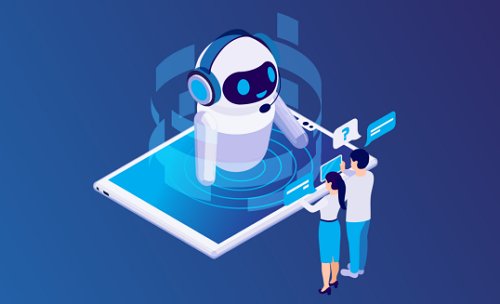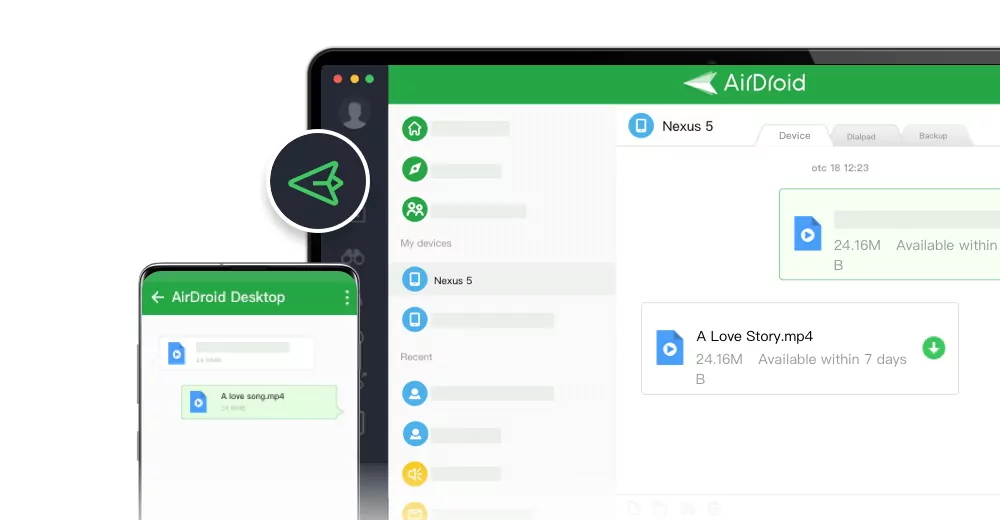An Ultimate Guide to Conversational AI Solutions in 2023
Companies in the modern digital age often use conversational AI to enhance the value of their offerings. Both small businesses and multinational enterprises are racing to be the first to profit from this exciting new development. This is hardly surprising, considering how quickly the AI market is expected to expand.

As a matter of fact, Tractica forecasts that by 2025, expenditure on AI software will have climbed to $36.8 billion, a CAGR of 56.8% from 2016 levels. However, if you're unaware of Conversational AI Software, don't worry; we've got you covered! In this article, you'll get all the details about conversational AI. Let's get started!
What Is Conversational AI?
Conversational AI (Artificial Intelligence) describes systems that facilitate natural communication between computers and people. They are often the brains behind voice-enabled devices and services like Amazon's Echo and Google Home's virtual assistants. Unlike conventional chatbots or conversational bots, which rely on preprogrammed responses to user input, conversational AI technology can learn on the go. Conversational AI systems may self-teach via reinforcement or machine learning rather than requiring human teaching.
How Conversational AI Works?
The user interacts with the conversational AI system in the first stage by providing spoken or written commands. The input that has been created is next examined. If the user input is text, the conversational AI will employ NLU to decipher what they mean. If the input is vocal, the conversational AI will decipher it with Automatic Speech Recognition (ASR).
After the data is analyzed, conversational AI employs natural language generation (a subset of NLP) to formulate a response to the user's input. Finally, conversational AI evaluates user inputs to refine and perfect its responses.
Components of Conversational AI
In this section, we will explore the five key components that come together to form an AI capable of engaging in conversation.
- NLP: NLP is like schooling a computer to grasp and react to human language, going beyond a mere dictionary understanding. In NLP, you talk about cracking the code of sentence structures, unravelling slang and idioms, and giving the computer the power to speak our language like a pro.
- Machine Learning: Machine Learning enables computers to learn how to decipher human speech by feasting on massive amounts of data. Through this process, machines gain the ability to comprehend word context and grasp the intricate relationships between them. Picture computers are evolving into language virtuosos, constantly honing their skills and improving with every interaction.
- Computer Vision: The sorcery allows computers to "see" and make sense of visual information. We're talking about analyzing images, identifying objects, and detecting people's emotions in pictures. It's like granting computers the superpower to perceive and interpret the visual world, just like we do.
- Speech Recognition: It's not just about machines picking up individual sounds; understanding the nuances of grammar and syntax in human speech is also crucial. Spoken words may be converted into text, and their meanings are completely understood with voice recognition technology. It's like talking to a super-intelligent machine that gets everything you mean.
- Text Analysis: This captivating process allows us to extract insights from textual data. It involves unravelling the mysteries of sentences, identifying subjects, verbs, and objects, and recognizing the magnificent presence of nouns, verbs, and adjectives within phrases. By diving deep into the text, we uncover the meaning of sentences and the intricate connections between words. It's like having a language detective that uncovers the hidden treasures of written communication.
Top 6 Conversational AI Examples
Looking for the best examples of conversational AI? These tools are the best:
1ChatInsight
ChatInsight is an advanced conversational AI platform for bisiness to create chatbots for various commercial settings and communication mediums. Unlike traditional rule/keyword-based systems, ChatInsight powered by ChatGPT can understand and respond intelligently to human-like interactions. Its goal is to help eliminate the hassles associated with conventional support while providing superior care to customers using the advantages of artificial intelligence.
Key Features
- Offers accurate, multilingual, 24/7 consulting services
- Trained with a customized knowledge base to answer questions
- Reduce massive repeating questions support and handle millions of conversations and users
2Google Dialogflow
Google's Dialogflow provides a robust environment for programming chatbots and other conversational agents like virtual personal assistants. Powered by the same deep learning technology as Google Assistant, this software allows you to create more lifelike interactions between customers and virtual agents.
Key Features
- Provide top-tier, AI-driven assistance for engaging in discussions with customers
- Integrated coding environment for text and audio bots
- Joins the 1.5 million-strong Dialogflow development community
Pros
- Multi-language support
- Rich messaging formats
Cons
- Limited customization
3Microsoft Bot Framework
Building smart bots that can be used in Microsoft Teams, Slack, and other platforms is made possible via the Microsoft Bot Framework. The Direct Line API lets your bot communicate with a custom client application.
Key Features
- Use open-source software development kits (SDKs) and tools to create, test, and link bots capable of genuine user interaction
- Builds an AI-powered platform that promotes your business while letting you maintain full control over your information
- Creates reliable, globally deployable solutions that work with your current IT infrastructure
Pros
- Strong community support
- Integration with Microsoft ecosystem
Cons
- Needs programming knowledge
4Pandorabots
Pandorabots is an artificial intelligence platform that helps organizations create and launch chatbots with complex conversational skills. You may connect Pandorabots to other services using RESTful APIs.
Key Features
- Allows AIML scripts to be written in any human language
- Allows rollout through voice and text channels
- No platform restrictions; you own and may use the code everywhere
Pros
- Extensive customization options
- Strong language support
Cons
- Need technical knowledge for advanced features
5LivePerson Conversational Cloud
The LivePerson Conversational Cloud is an artificial intelligence-driven messaging platform that facilitates human and bot-based client service. The platform's artificial intelligence (AI) is superior to any competitor's. Every major sector globally utilizes it since it enables approximately 1 billion conversational engagements monthly.
Key Features
- You can learn more about your target audience through conversations with them
- You can access and evaluate data across phone and messaging channels
- Enable staff to provide consistent, high-quality service to customers across all channels
Pros
- Omnichannel support
- Strong customer engagement capabilities
Cons
- Higher pricing
6Haptik
Haptik is an artificial intelligence (AI) platform for conversational applications. It helps organizations create AI-driven chatbots and voice assistants. Proactive alerts through WhatsApp and other messaging channels and timely prospect engagement are other benefits of this technique.
Key Features
- Lets you use WhatsApp chatbots powered by Google's DialogBot to increase brand awareness and sales
- Use Conversational Ads to lure people away from social media feeds and into more personal interactions with your brand
- Helps you keep an eye on key indicators to gauge your chatbot's success
Pros
- Easy-to-use visual interface
- Seamless integration
Cons
- Limits customization
Conversational AI Use Cases
In the vast landscape of customer-centric solutions and advanced business operations, conversational Artificial Intelligence (AI) emerges as a transformative force. Its influence permeates various departments and industries, bringing forth many use cases that encapsulate its true potential. Some of the top industrial use cases of conversational AI are:
1. Personalized Customer Support
Undoubtedly, conversational AI's foremost and conspicuous utilization lies in personalized customer service, presented at an unparalleled scale. Through the mastery of AI, businesses can delve deep into customer data and previous interactions, enabling them to deliver tailored solutions that resonate with everyone.
2. Collection of Data
However, conversational AI extends its prowess beyond mere customer interactions. It becomes a valuable ally in collecting and analyzing data, empowering businesses to make informed and pivotal decisions. By understanding your customers and unearthing cracks within existing processes, you gain a definite competitive edge.
3. Improved Customer Satisfaction
A support team fortified with conversational AI, equipped to handle customer complaints, resolve tier-1 support issues, and deftly navigate complex interactions. The beauty lies in that all of this can be achieved without direct customer engagement. This seamless integration saves time, amplifies first-contact resolution, and ultimately elevates customer satisfaction.
4. Internet of Things (IoT) Devices
In the realm of modern homes, conversational AI-enabled devices emerge as loyal companions, intertwining with our lives in ways unimaginable. Armed with speech recognition capabilities, these smart entities interact with users and assist in various tasks. Think of Amazon Echo and Google Home, virtual custodians, mobile apps and smart device assistants like Google Assistant, Apple Siri, or Cortana, guiding us through the intricate maze of technological marvels.
Benefits of Conversational AI
Implementing conversational AI solutions can bring several benefits to businesses, including:
- Improved customer experience and engagement
- 24/7 availability and instant responses
- Cost savings through automation
- Increased efficiency in handling customer queries
- Personalized recommendations and services
- Enhanced data collection for analytics and insights
Challenges of Conversational AI Solutions
It's essential to acknowledge and address the challenges that come along with conversational AI solution, which includes:
1. Unravelling complex and ambiguous user queries
2. Navigating contextual understanding and conversation flow
3. Embracing language and cultural variations
4. Prioritizing privacy and security
5. Pursuing continuous learning and improvement
Conclusion
Conversational AI has revolutionized business-to-customer interactions. Intelligent chatbots like ChatInsight that give individualized and effective help may now be developed by enterprises using cutting-edge technology and AI algorithms. Conversational AI has many potential uses and advantages in fields as diverse as customer service, e-commerce, and healthcare.









Leave a Reply.